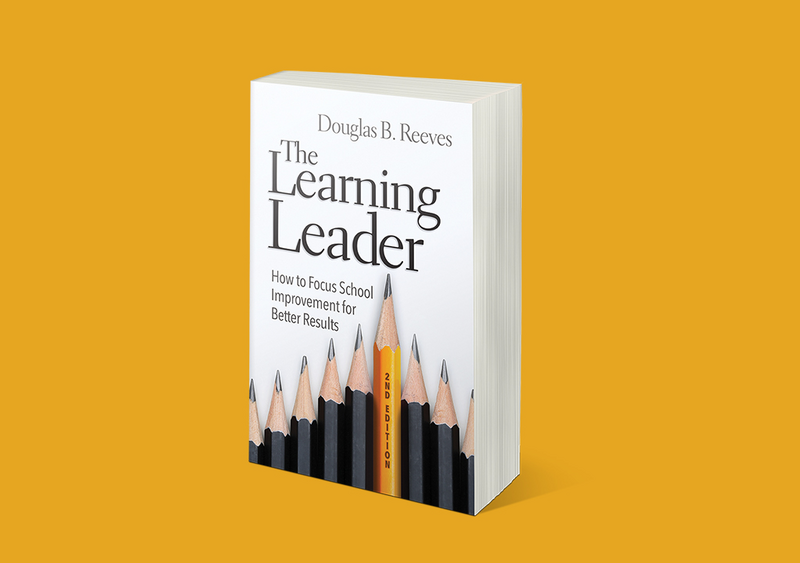Who doesn't like a good magic trick? Regardless of how many times you see them—whether up close on the street or from a faraway seat in a theater—it's always satisfying to watch magicians make things disappear and reappear.
Yet, once you discover how the trick works, you realize it's just an illusion—that what you thought you were seeing was wrong. And while magic tricks are often just harmless fun, other illusions are dangerous—for example, when they lead educators to settle for the appearance of student engagement as a substitute for vital learning.
We may believe we can easily identify the behavior of disengaged students—sleeping in class, playing games on a device, or disrupting the learning for others. But disengagement can be less obvious, and sometimes hidden. Students may be quiet and compliant in class, facing the teacher and occasionally nodding in agreement, but not be connecting with the learning. They may turn in all their work on time but not really understand the concept and purpose.
Consider, for example, Jaiden, a 10th-grade student (the scenarios mentioned here are real, although the names have been changed). He is quiet, comes to class on time, and follows directions to clear his desk or move to a group. He is not always prepared but is polite in asking for a pencil or book when he forgets his materials. Jaiden does not see any need for most of the classes he is taking and is not sure what he wants to do after high school. Although he is quite bright, he opts to take easier classes because he believes that he will not like the teachers or his classmates in the more advanced classes.
Jaiden's behavior may lead his teachers to believe he is engaged, but that behavior is an illusion. It is a performance designed to satisfy his teachers, who value an orderly environment in which the teacher talks and the students listen.
Many students know how to "play school": Be quiet in class, take notes when anything is written on the board, smile, and nod now and then. The engagement illusion can also exist when students appear diligent and on task by quietly working on a digital device, but the human interaction that is essential to learning might be so minimal that it disengages the student from active learning (Turkle, 2016). Layer on top of that a lesson that fails to make connections to the lives of students, and students like Jaiden can sink into a sea of boredom and distraction, even while not showing it.
This one-way communication is the opposite of the vibrant and sometimes noisy collaborative environments that reveal evidence of real learning. The science behind the impact of student engagement on learning is not new (Klem & Connell, 2009; Wardlow, 2016), but in the pandemic age, the importance of authentic engagement has grown dramatically (Toth, 2021).
When Assumptions Are Wrong
Let's consider another case. Kari is a 3rd-grade student who is constantly being disciplined. She gets inside recess for failure to complete homework, misbehaving, talking in class, not following directions, and being off task. She loves to draw and will engage in any conversations about current events but doesn't like math or science. Her outbursts usually come during silent reading time.
The students like Kari in our classrooms are routinely classified as disengaged, though they are capable of focus and engagement if we take the time to learn about their interests and how they best express their learning. Sometimes, educators create misconceptions about students like Kari rather than probe into reasons the outbursts seem to only happen during silent reading time and consider modifications to support her behavior.
Teachers and the coaches and administrators who conduct classroom observations must look beyond the superficialities in these cases to gain a deeper understanding of engagement. It's possible that in our rush to support our students, we classify student understanding of the material through compliant behaviors. There's an illusion that manifests through our correlation of attentive students as successful students and withdrawn students as not caring. But the power of learning occurs when lessons are created to engage each student.
Student engagement is "the energy and effort that students employ within their learning community, observable via any number of behavioral, cognitive, or affective indicators across a continuum" (Bond et al., 2020, p. 3). The research reveals two forms of student engagement: (1) the student's behaviors, emotions, and thought processes, and (2) the student's intellectual response to the challenge of the material.
How can you tell if students are engaged? First, reflect on who is doing most of the talking—the students or the teachers? Teachers sometimes are led to believe that it is their job to perform for the class, as well as for instructional coaches and administrators who drop by the classroom. These performances frequently involve presentations in which the teacher's expertise is on full display, but there is little demonstration of student learning. In contrast to these performances, other teachers are willing to explore student understanding—and lack of it—by allowing students to talk and make fearless mistakes. These educators can transform students into confident learners.
Many students know how to "play school": Be quiet in class, take notes when anything is written on the board, smile, and nod now and then.
One of the greatest challenges teachers face in improving student engagement is correcting the perception that engagement is something within the student that cannot be influenced by a teacher. In the midst of a teacher performance, Jaiden, for example, might appear to be engaged, with his eyes on the teacher and pencil poised to copy whatever notes the teacher posts on the board. This compliant demeanor shields the reality that Jaiden's mind is a million miles away, but he has learned how to behave, especially when the principal is watching. Kari, on the other hand, may be deeply engaged in learning as she draws what may look like doodles but are in fact creative visual representations of how the teacher's lesson fits into her broader understanding of the subject. Rather than copy the teacher's notes, Kari is constructing learning with arrows, diagrams, pictures, and quotations above characters that reveal deep understanding and questions for further learning.
Here are three major educator misperceptions that perpetuate engagement illusions, along with suggestions for how to correct them to ensure proper learning is taking place.
Illusion #1. What I'm Interested In, They'll Be Interested In
Our experiences as teachers—Gupta in science and Reeves in math—illuminate our own errors in understanding student engagement. Gupta often used his own frames of reference—sports, after-school activities, and family vacations—as a way to connect with students to build relationships. But they did not always reflect the interests of his students. For his part, Reeves taught new arrivals to the United States who had little connection with the cultural references he often used in class. But while the mathematics of baseball was irrelevant to many of his students who had recently arrived from Eastern Europe, almost all of them were fascinated when the same math principles were illustrated with scenarios involving flight and aerial navigation.
Both of us learned to listen to our students and let our genuine curiosity fuel an environment of mutual discovery in which we became fellow learners and explorers with our students. Gupta discovered the love his students had for cars and racing, so he developed a lesson in which students used the distance = rate x time formula to measure and report the speed of passing cars outside the school. The students loved problem solving a plan to measure the speed of the cars, being outside to monitor and track the speeds, and even having a police officer compare their findings with his radar gun!
Engagement can also be explored outside of the confines of the classroom. Careful listening to student conversations on the playground, lunchroom, and hallways can be illuminating. We have heard wonderful conversations about books, science projects, animals, and literary characters that demonstrate exceptional levels of student engagement that mere classroom observations would not reveal. As teachers, we can only make these connections to the lives of our students when we listen to spontaneous conversations among students outside of the classroom.
Illusion #2. Students Learn for the Sake of Learning
Teachers may have entered the profession because of a thirst and curiosity for knowledge, or for the desire to shape and mold young minds. However, we do not always understand that our students may not want to learn just for the sake of learning. They need relevance. We need to be ready to answer the frequent question, "When will I ever need to know this in life?"
Some textbooks are getting better at providing relevant and timely content, but our experience is that student interests change more frequently than new instructional materials are published. Case studies about immigration, pollution, student health, and space travel that were of vital interest to students in past years may not work today. Thus, the obligation to listen and learn collaboratively with students and families is a never-ending journey for educators. When teachers invest time at the beginning of a unit to foster an open dialogue that gauges student understanding, misconceptions, viewpoints, questions, and interests, they can create essential questions and identify beneficial resources.
Illusion #3. There Is One Clear Path to Learning
In folklore, the silver bullet was the key to defeating a werewolf or other supernatural creature. The imagery of the silver bullet is used today to suggest a simple tool to solve a complex problem. Yet, in most classrooms, the achievement of the perfect blend of challenge and confidence is elusive; there are no silver bullets. Skillful educators make midcourse corrections throughout the day to meet the learning needs of students and engage their interest.
It is possible that in our rush to support our students, we classify student understanding of the material through compliant behaviors.
The perfect lesson plan, freshly downloaded from the internet, is never perfect for the real classroom. Rather, it's the messy plans, full of annotations, excisions, and marginal additions, that reflect the reality of our classrooms. For example, a lesson that allows students like Jaiden and Kari to identify a position on a current issue and construct an argument to defend their position would definitely raise their engagement level more than a lesson that just had them read an article about the issue.
Getting Beyond the Illusion
Optical illusions occur based on changes in patterns, colors, or light that mislead the brain's hardwiring. They make our brains perceive things based on past experiences or what seems logical. As educators, we can similarly be tricked into thinking that the lessons we've prepared and the planning we've done will allow for students to be engaged. Therefore, it's easy to look at students like Jaiden and Kari and make inaccurate inferences on their levels of engagement. Only by doing the work to look past these illusions—by identifying our students' interests and needs; creating meaningful, real-life connections to the work; and ensuring our lessons result in productive struggle for students—can we begin to gain insights and strategies for success for all our students.
Reflect and Discuss
How do you tell if students are engaged? Did reading this article make you rethink those indicators?
How do you identify the interests of each of your students?
What are ways you can differentiate your lessons and monitor student engagement to ensure productive struggle is occurring?
Learning Guide
Read Douglas B. Reeves's book on school improvement.










